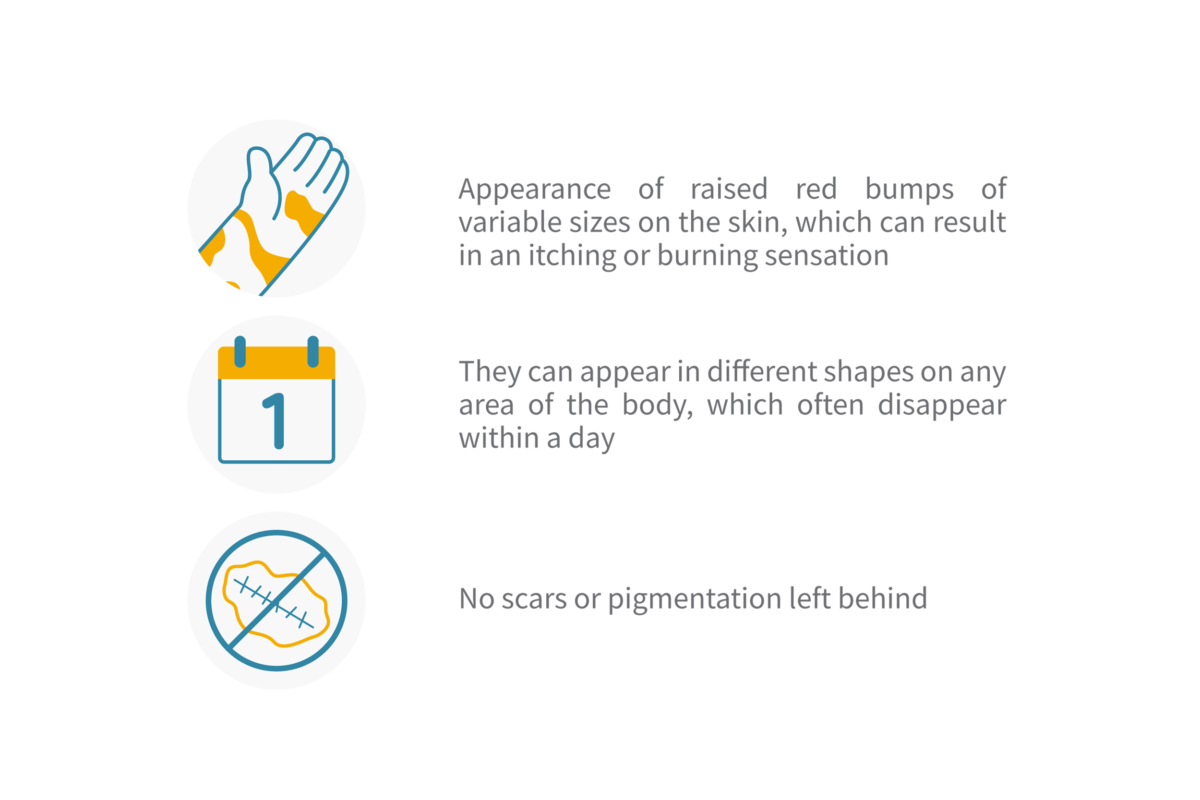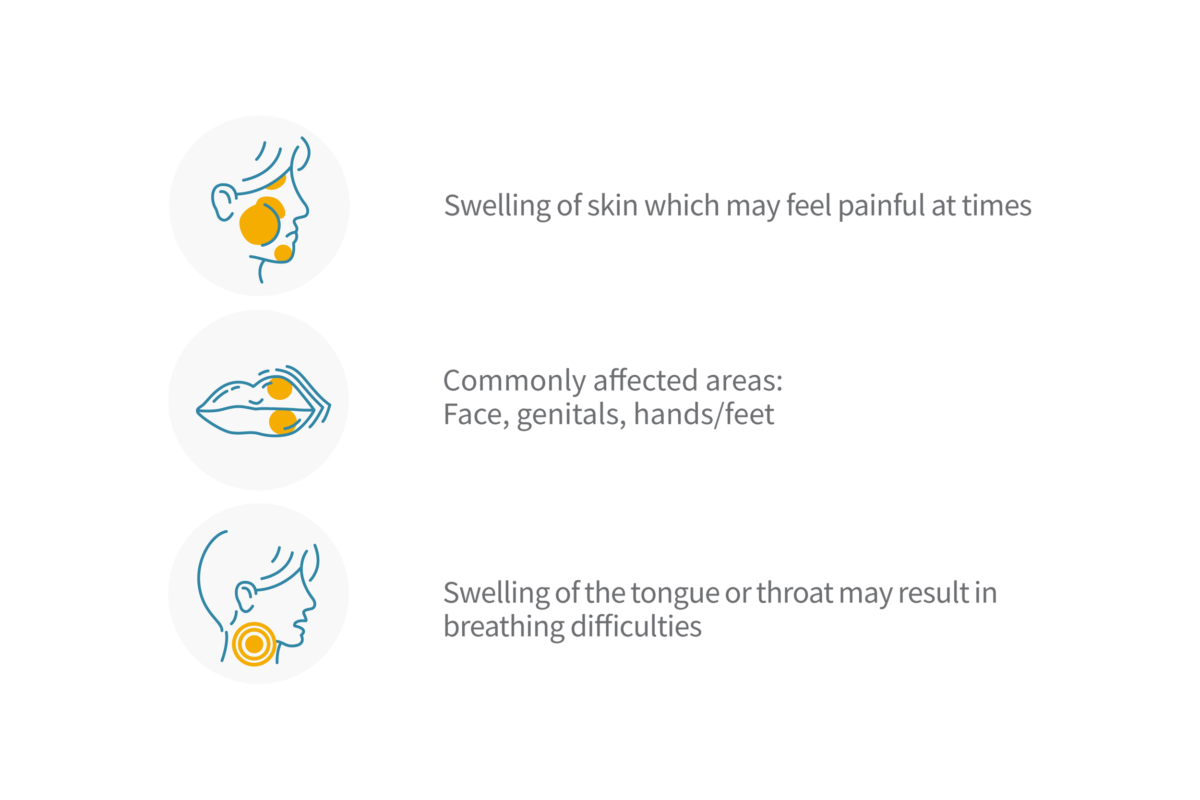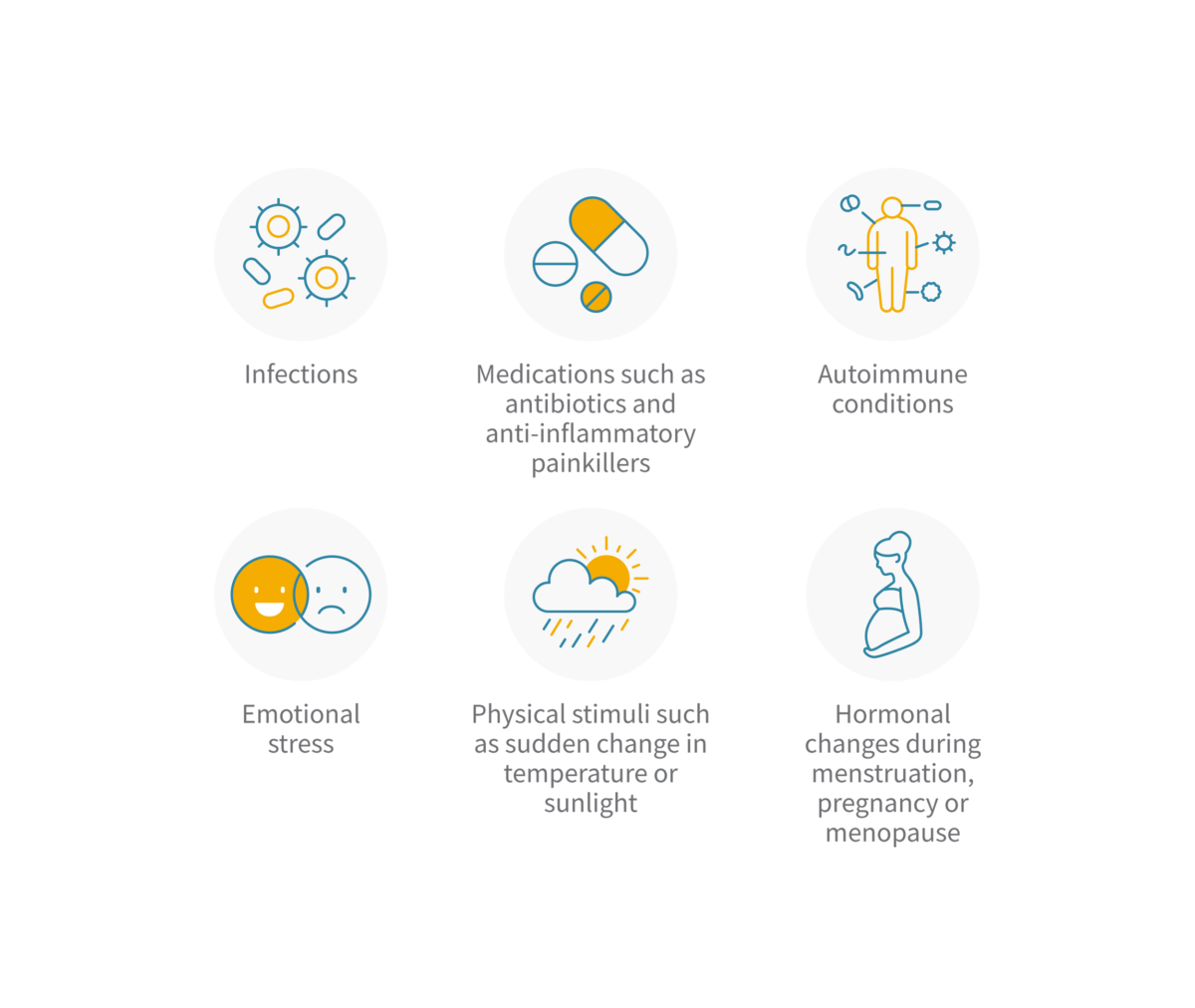Urticaria
Urticaria
Pathophysiology
Chronic spontaneous urticaria (CSU) is a skin condition characterised by the presence of itchy bumps or skin swelling that are present for more than 6 weeks. The condition is “spontaneous” because symptoms may appear without any specific triggers.
Symptoms
CSU is associated with one or both of the symptoms below:
Hives or wheals:

Angioedema:

How is CSU diagnosed?
The diagnosis of CSU is achieved by checking on the patient’s symptoms and medical history. Your allergist may take blood tests to rule out other causes of your symptoms. Although symptoms can overlap, CSU should not be confused with drug or food allergies. However, doctors are usually able to diagnose CSU after a detailed consultation. Rarely, allergy tests are needed though you should consult your allergist if these tests are indicated.
Common Triggers

Treatment
The goal of treatment is to achieve a good quality of life unaffected by your symptoms. The severity of symptoms may differ in different individuals, hence each patient will have a treatment plan tailored to their needs. Most cases can be treated by your family doctor with a medication called antihistamines. They may step up your treatment to fourfold of standard dosing if required. If your symptoms persist despite taking antihistamines, discuss with your allergist on other treatment options. This includes medications that may regulate your immune system, such as an injection called biologics.
Allergists sometimes use scoring systems to gauge how severe your symptoms are! Check out your UAS7 score (download) prior to your next visit to an Allergist.

